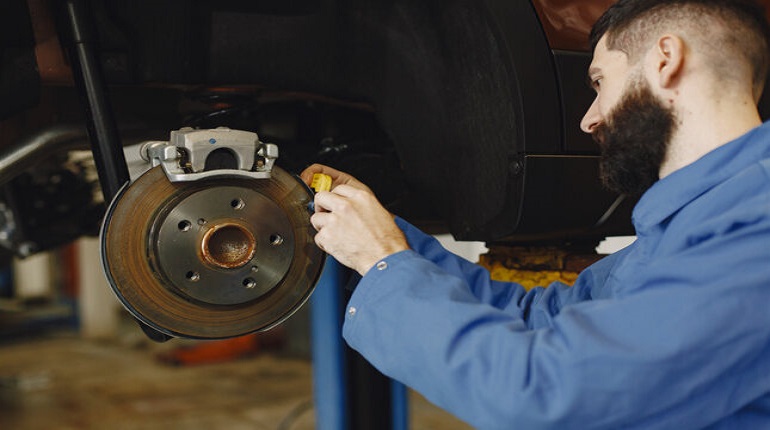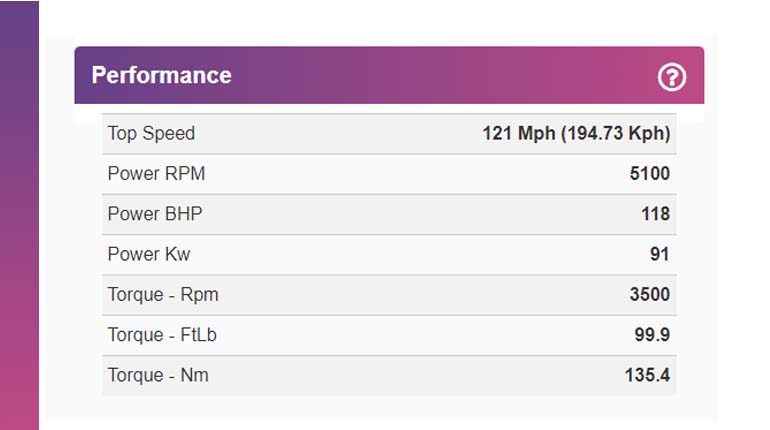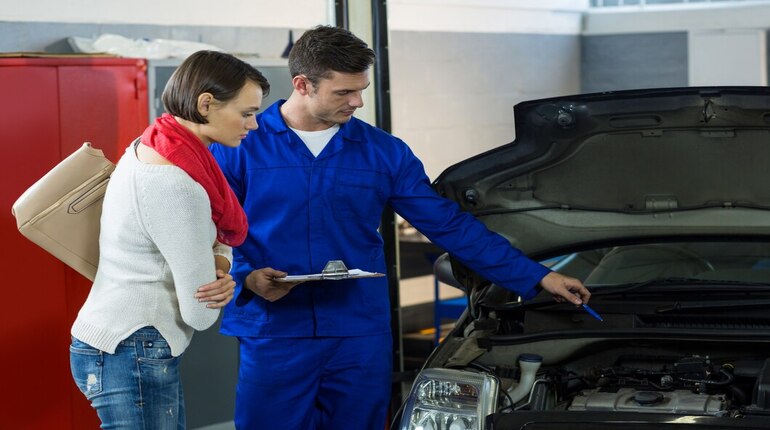Brake pads and brake shoes are key components of a vehicle’s braking system. They both serve the same purpose, which is to create friction against the rotating brake rotor or drum to slow down or stop the vehicle. However, they have different designs and are used in different types of braking systems.
Table of contents
1. Brake pads:
Brake pads are used in disc brake systems, which are the most common type of braking system in modern vehicles. They are flat, rectangular-shaped plates made of friction material (usually a composite of various materials like organic compounds, semi-metallics, or ceramics) attached to a metal backing plate. When the brake pedal is pressed, hydraulic pressure forces the brake caliper to squeeze the brake pads against the brake rotor, creating friction that slows down or stops the vehicle.
2. Brake shoes:
Brake shoes are used in drum brake systems, which are commonly found in older vehicles or certain applications like the rear brakes of some trucks. Brake shoes are curved metal plates with friction material (similar to brake pads) attached to the outer surface. When the brake pedal is pressed, hydraulic pressure pushes the brake shoes outwards, causing them to press against the inner surface of the brake drum. The resulting friction slows down or stops the vehicle.
Brake Pad and Brake Shoe Replacement
While both brake pads and brake shoes serve the same purpose, there are a few key differences between them. Brake pads are typically easier to replace, as they are located outside the brake rotor and can be accessed by removing the wheel. Brake shoes, on the other hand, are located inside the brake drum, requiring additional disassembly to access and replace them. Additionally, brake pads usually offer better braking performance and are more commonly used in modern vehicles due to their design and efficiency.
It’s important to regularly inspect and maintain both brake pads and brake shoes to ensure optimal braking performance and safety on the road. If you notice any signs of wear or decreased braking performance, it’s recommended to have them inspected and replaced by a qualified mechanic
When and How Replace Brake Pads?
Replacing brake pads is an important part of vehicle maintenance to ensure your vehicle’s braking system works effectively and safely. Here’s a general guideline on when and how to replace them:
1. When to Replace Brake Pads:
Brake pads need to be replaced when they are worn down to a certain thickness. Most manufacturers recommend replacing them when they reach around 3mm to 2mm of thickness remaining. Some signs that your brake pads need replacement include:
- Squeaking or squealing noises when braking.
- Reduced braking performance or longer stopping distances.
- Vibrations or pulsations in the brake pedal.
- Warning light on the dashboard (if your vehicle has a brake pad wear sensor).
2. How to Replace Brake Pads:
Here’s a general outline of how to replace brake pads:
- Gather necessary tools and replacement brake pads.
- Lift the vehicle safely and remove the wheel where you’ll be working.
- Locate the brake caliper and remove any retaining clips or bolts holding it in place.
- Carefully lift the caliper off the brake rotor. You may need to compress the caliper piston using a clamp to make room for the new, thicker brake pads.
- Slide out the old brake pads and replace them with the new ones.
- Reattach the caliper and secure it with bolts or clips.
- Put the wheel back on and lower the vehicle.
- Before driving, pump the brake pedal a few times to ensure proper contact between the new brake pads and the rotor.
When and How to Replace Brake Shoes?
Brake shoes are part of drum brake systems, which are less common in modern vehicles but still found in some rear wheels.
1. When to Replace Brake Shoes:
Brake shoes need to be replaced when they are worn down to the minimum thickness specified by the manufacturer. This is often around 1mm of thickness remaining. Signs that brake shoes need replacement include:
- Reduced braking performance.
- Parking brake not holding the vehicle properly.
- Grinding noises coming from the wheels when braking.
2. How to Replace Brake Shoe:
Replacing brake shoes involves a similar process, but with some differences due to the drum brake system:
- Lift the vehicle and remove the wheel.
- Locate the brake drum and remove it. This might involve removing the drum’s retaining clips or screws.
- Inside the drum, you’ll see the brake shoes, along with the brake hardware.
- Disassemble the brake shoes by carefully removing the hardware and springs.
- Replace the old brake shoes with the new ones, ensuring they are properly positioned and aligned.
- Reassemble the brake shoes, hardware, and springs.
- Put the drum back in place.
- Reattach the wheel and lower the vehicle.
Remember that these are general guidelines, and it’s crucial to refer to your vehicle’s specific owner’s manual for detailed instructions and specifications. If you’re not comfortable performing brake maintenance yourself, it’s advisable to have a qualified mechanic do the job to ensure your safety on the road.








